She may not look like a rule breaker but Constance Spry's unconventional approach to floral decoration is inspiring a new generation of florists as well as an exhibition at the Garden Museum, London.
"I wanted a collection of memories and artefacts to show how much she had achieved," explains Shane Connolly of the forthcoming exhibition he has guest curated on the avant garde florist at the Garden Museum, London. Connolly was given exclusive access to Spry's personal archives, which were deposited at the RHS Lindley Library after her death in 1960 and have not been displayed publicly since.
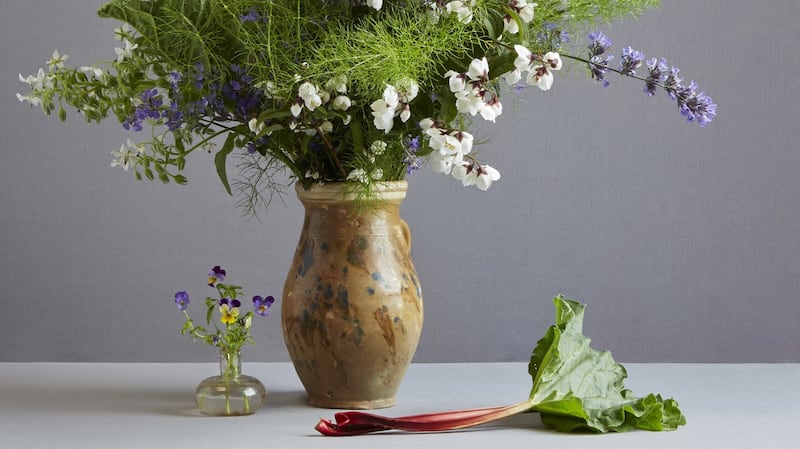
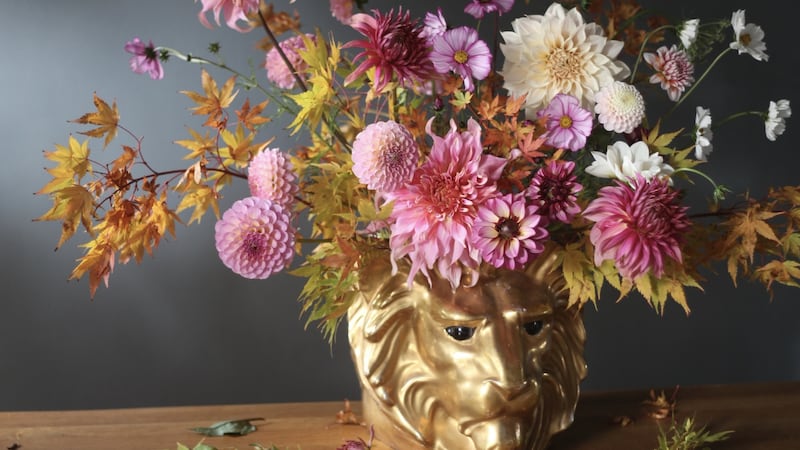
Some of these artefacts include photographs of Spry’s extravagant arrangements. Her innovation for pairing high-end blooms such as amaryllis and clematis with “country weeds” like pussy willow and kale was matched by the unconventional vessels she chose for display purposes. These ranged from jam jars to attic curios. Later she commissioned Fulham Pottery to create a collection based on her sketches of Roman, Greek and Phoenician vases which especially suited her asymmetric displays, often inspired by still life 18th-century artworks. Many of Spry’s original vases will be exhibited, as will signed copies of her influential books – she wrote 13 in all.
“I still refer to many of her books when researching colour and flowers,” says Connolly, who first became intrigued by Spry’s extraordinary life story via Elizabeth Coxhead’s biography – a gift given to Connolly when he worked with the esteemed florist Michael Goulding.

One of Spry’s core beliefs was that something original need not be expensive as reflected in her book Simple Flowers: A millionaire for a few pence. The irony of this democratic approach was that Spry was synonymous with society events and moved in rarefied circles, counting Cecil Beaton and Vita Sackville-West among her friends. She provided flowers for the Duke of Windsor and Wallis Simpson’s wedding in 1937 and masterminded the coronation of Queen Elizabeth II in 1953, for which she also created, with her friend Rosemary Hume, “Poulet Reine Elizabeth” or Coronation chicken. Now a summer staple, Connolly says Spry’s original recipe is not as rich as current iterations, due to post-war rationing.
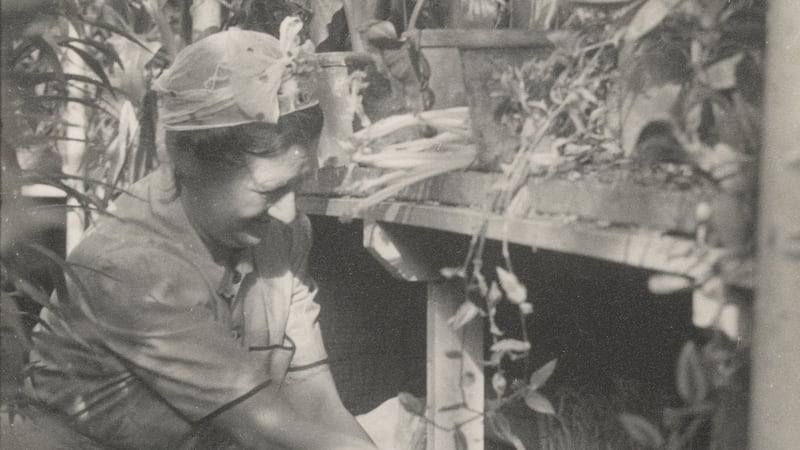
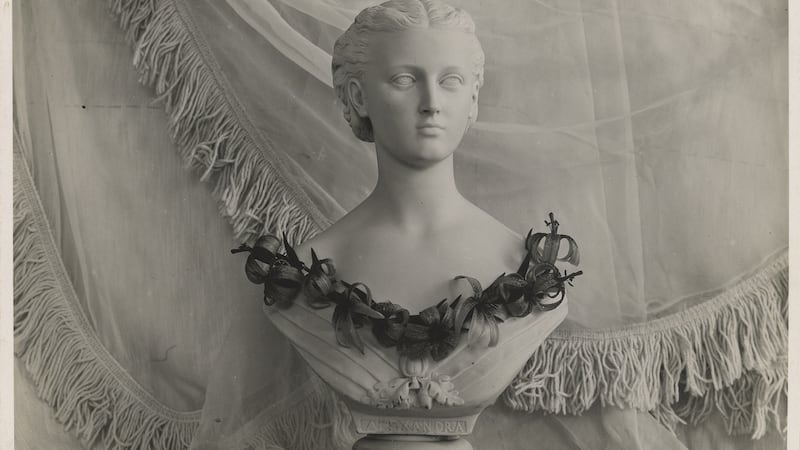
If the coronation was the apex of Spry’s career, it was in two halves; she did not begin floral decoration until the age of 40. Connolly sees her legacy as surpassing floristry.
“She was an educator first and foremost and it is her family background and experience in Ireland which cemented this. In fact, Mrs Spry claimed to have an Irish accent and would often say she was brought up in Ireland.”
Spry was born Constance Fletcher in Derby in 1886 and only moved to Ireland in 1901, aged 14, when her father was appointed chief inspector of technical education. He enrolled his daughter at Alexandra College; the Fletchers’ first home was in Dawson Court, Blackrock (with a walled garden and ceanothus hedge as Spry recalled). At school she was described as lively and enjoyed studying hygiene and physiology, but not so much her extracurricular physics lessons.
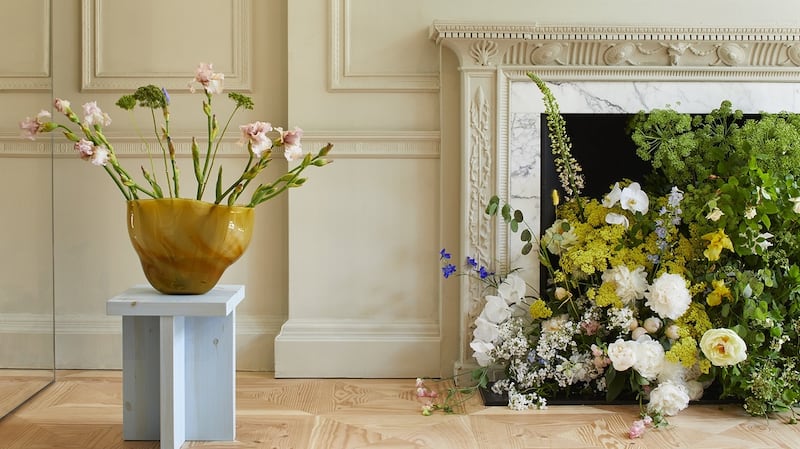
From 1905 to 1908 she worked as a lecturer for the Women’s National Health Association in Ireland. In this role she travelled around the country giving practical demonstrations on first aid and nursing. Her lectures proved popular because of her natural charisma and style (she loved hats and would also wear them when arranging flowers). She was also secretary of the Dublin Red Cross.
Much to the chagrin of her social climbing mother, Constance married widower and mining engineer James Heppell Marr in 1910, moving to Coolbawn, Co Kilkenny, to live with him and his young daughter. They had a son, Anthony, in 1912. It was not a happy marriage and after Marr volunteered for military service in 1914, Spry moved back to Dublin – living in a small flat on Leeson Street – and later London in 1917. Given her financial independence she was able to divorce Marr, and then worked in the civil service as head of women’s staff at the Ministry of Aircraft Production.
“She did much for the war effort, encouraging the British to grow and eat their own food especially in her book Come Into the Garden, Cook,” Connolly says. In 1921 she was appointed headmistress of the Homerton and South Hackney Day Continuation School in east London, where she instructed teenage factory workers in cookery, dressmaking and flower arranging.
It could be said her social conscience, love of homemaking and gardening (Spry was one of the first to champion old-fashioned roses) were nurtured in Ireland. These skills later reached fruition when she bought Winkfield Place in Berkshire, which she decorated with bohemian charm, on a limited budget. She used felt for carpets and patchwork for curtains, picking up furniture in auctions.
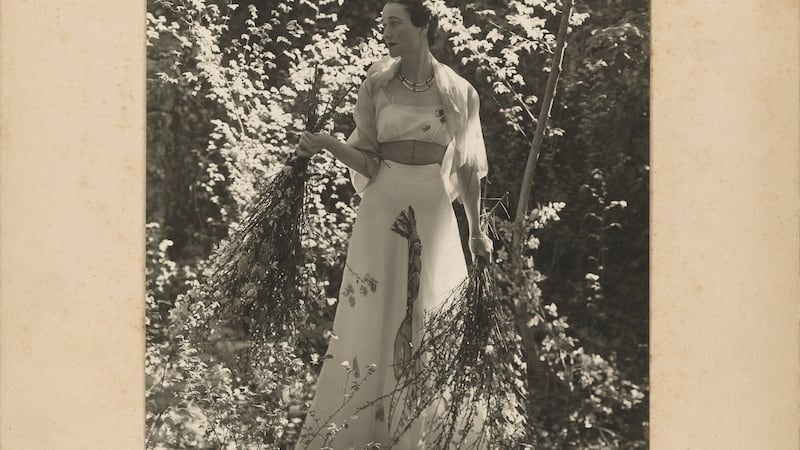
Spry’s aim for Winkfield Place was to teach young women skills which would make them financially independent: a secretarial course was added, and cookery, dressmaking and needlepoint were also on the curriculum. Spry liked to call it a “beginning school”, though it has always been considered a finishing school firstly for debutantes, latterly for Sloane Rangers. Connolly describes her as “a consummate homemaker – in her heyday she was akin to Martha Stewart, one of the original lifestyle influencers”.
She lectured, toured the US, found time to garden (with Graham Thomas) and loved antique hunting (with Oliver Messel and Victor Stiebel). Though she failed to monetise her name like her contemporaries Elizabeth Arden and Helena Rubenstein, an auction of her furniture in 1990 raised several million, proving her eye for collectibles.
One of Connolly’s favourite items in the exhibition is the remains of a needlepoint carpet which Spry made to decorate Winkfield Place. Having put out a request on social media, Connolly was delighted when several panels turned up recently.
“Mrs Spry’s son, Tony, had originally been given the carpet which he passed to his sister-in-law and the few remaining panels had been lying in an attic for many years. They have been bequeathed to the Garden Museum.”
While Connolly had originally hoped for an immersive exhibition, with visitors listening on headphones to reminiscences, now, due to Covid restrictions, a series of timed visits is planned.
There will undoubtedly be less of a brouhaha at the opening of Constance Spry and the Fashion For Flowers, than at the previous exhibition held at the Design Museum, in 2004, to honour her work. At that time two of the museum directors –James Dyson and the late Sir Terence Conran – resigned in protest, objecting that her superficial styling did not equate with feats of engineering and technical innovation. Conran was particularly condescending about her "high society mimsiness".
Yet Spry elevated flower arranging to an art form. And the address 64 South Audley Street, Mayfair, London, (Spry’s flagship store) is to floral devotees what Chanel’s apartment on 31, rue Cambon, Paris is to fashionistas.
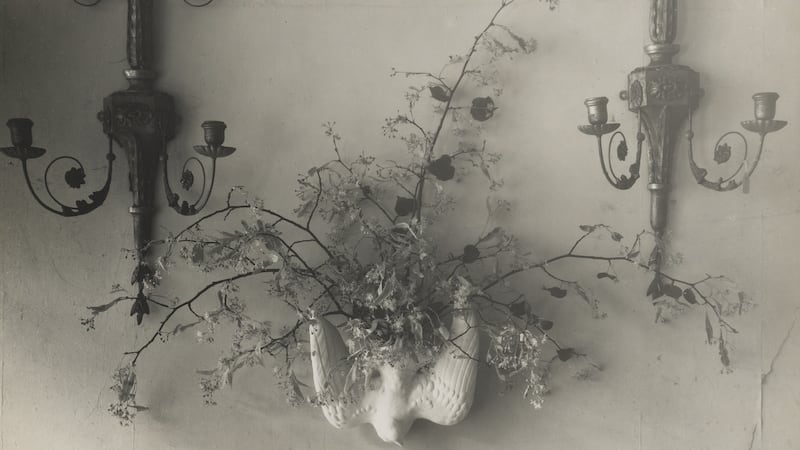
Life behind the scenes was far from “mimsy” too – required reading is Sue Shepard’s biography The Surprising Life of Constance Spry. Shepard documents Spry’s divorce, adultery (she set up home with the married Shav Spry in 1923 and took his name), as well as a series of sapphic friendships. She had a relationship with the artist Gluck (Hannah Gluckstein), and floral paintings by Gluck which were owned by Spry are on display at the exhibition. Other exhibits include a rare surviving example of a wax flower work and glass tables which Spry used for her iconic flower displays.
As the exhibition will last for four months Spry’s floral arrangements will not be replicated. There’s no need – Spry’s legacy lives on in the seasonality, sustainability and striking, singular style of many contemporary florists, most notably Shane Connolly himself.
Constance Spry and the Fashion For Flowers opens at the Garden Museum, London on May 17th-September 26th.
thegarden.org.uk
Irish florists continuing Constance Spry’s legacy
Shane Connolly
A royal warrant holder and psychology graduate, the Northern Irish-born Connolly famously did the wedding flowers of Prince William and Catherine Middleton. His passion for flowers began as a child and was honed via work experience at Pulbrook & Gould with Lady Pulbrook and Michael Goulding OBE before setting up business 30 years ago. Connolly is proud to be the trustee of Floral Angels which donates flowers to be used in hospices or women's refuges. He has written five books, the most recent being Discovering The Meaning of Flowers, Love Found, Love Lost, Love Restored.
shaneconnollyandco.com
Terri Chandler and Katie Smyth
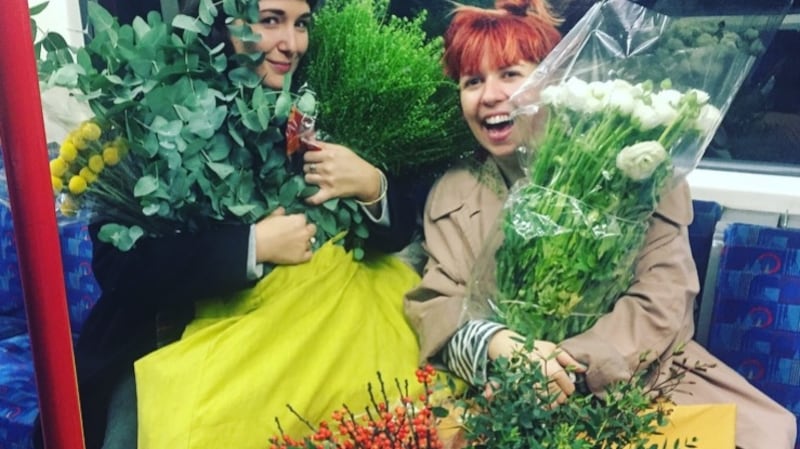
Personality and seasonality are the key pillars of Worm, a floral design studio set up in east London in 2016 by Terri Chandler and Katie Smyth, which is a favourite with fashion brands; Roksanda, Burberry, Matches Fashion, Erdem, H&M and Marks & Spencer are clients. The Irish landscape inspires many of their installations, including one called Memories, created for British Flower Week at the Garden Museum in 2019. "We had a little rock altar because our earliest memories of arranging flowers came from picking wildflowers for our May altars as kids," says Chandler, who counts Constance Spry's book, How to Do the Flowers, (1953), as a formative influence.
weareworm.com
Graeme Corbett
Originally from Banbridge, Co Down, London-based Corbett worked in television production for 12 years before switching to floristry. Like Spry, he had a knack of doing flowers for friends, who liked his style, and he later consolidated this intuitive approach with formal training.
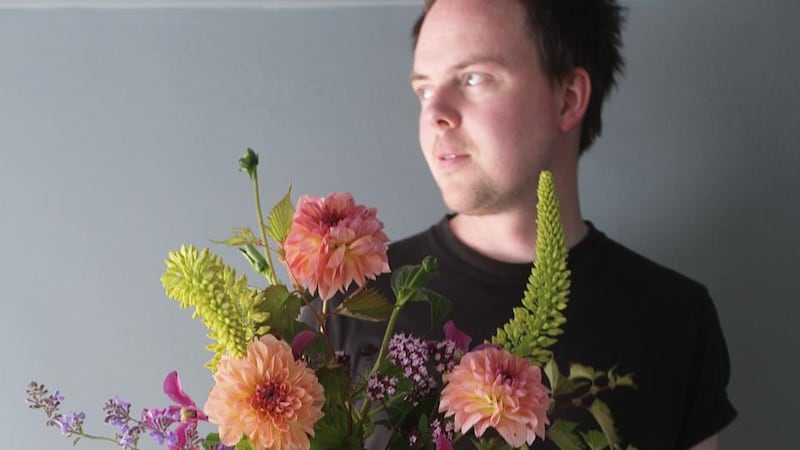
"My signature style is modern and colourful. I rely on local growers and cuttings of geum from my own garden and, as a result, my designs reflect the seasons. I work in a garage and we are surrounded by weeds such as forget-me-not which I love to incorporate."
bloomandburnflowers.com
Neill Strain
“It’s 90 per cent hard work and 10 per cent glamour,” says Neill Strain, about his day job which might include making house visits to Middle Eastern royals, creating bouquets for Lady Gaga, Nicole Kidman, Elton John or Joan Collins, planning a wedding at the Ritz or hosting designers such as Valentino Garavani or Donatella Versace at his boutique in Belgravia’s chic West Halkin Street.
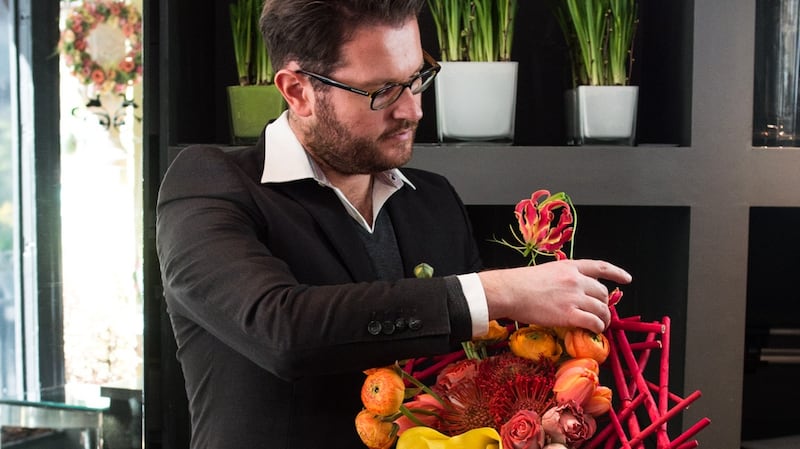
Originally from Co Armagh, Strain studied at Greenmount where his tutor, Dorothea Cherry-Downes, often talked of Spry's influence on her style.
neillstrain.com










